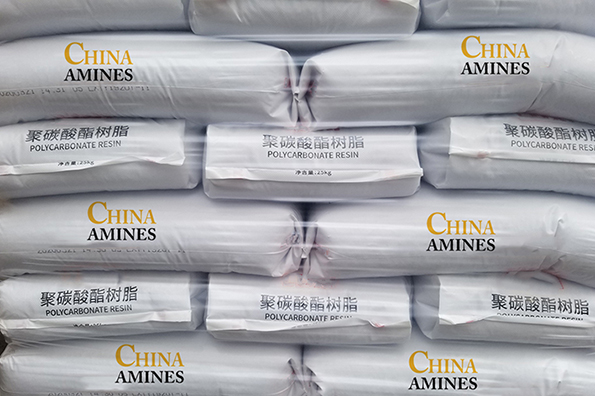1. Chemical Structure and Properties
Molecular Structure:
Composed of repeating units of bisphenol A (BPA) linked by carbonate groups (–O–(C=O)–O–).
General formula:
[-O-(C₆H₄)-C(CH₃)₂-(C₆H₄)-O-(C=O)-O-]ₙ
Physical Properties:
Transparency: >90% light transmission (comparable to glass).
Impact Resistance: Extremely high (Notched Izod: 850–1,000 J/m).
Thermal Stability: Glass transition temperature (Tg) ~147°C; usable up to 135°C.
Density: 1.20–1.22 g/cm³; Flammability: UL94 V-0 to V-2 (flame-retardant grades).
Chemical Resistance:
Resistant to weak acids, oils, and alcohols; degraded by strong bases (e.g., NaOH) and chlorinated solvents.
2. Industrial Applications
Electronics & Optics:
Smartphone Screens: Gorilla Glass alternatives for scratch-resistant displays.
LED Light Diffusers: High clarity and heat resistance in automotive headlights.
Automotive:
Headlamp Lenses: Replaced glass due to lightweight and impact resistance.
EV Battery Housings: Flame-retardant grades (e.g., Lexan® 943A) for thermal runaway protection.
Medical Devices:
Sterilizable Equipment: Autoclavable surgical tools and IV connectors.
Construction:
Bulletproof Windows: Layered PC panels (e.g., Lexan® Secure) for security glazing.
3. Safety and Toxicology
BPA Controversy:
Leaching Risk: Trace BPA migration from PC bottles under high heat or UV exposure.
Endocrine Disruption: BPA mimics estrogen, linked to reproductive and developmental issues (EFSA TDI: 4 µg/kg/day).
Regulatory Mitigations:
BPA-Free PC: Uses alternative monomers (e.g., bisphenol S, TMBPF) for food-contact applications.
Occupational Hazards: Inhalation of pyrolysis fumes (e.g., phenol, CO) during high-temperature processing.
Protection Measures:
PPE: Ventilation systems, respirators for dust/fume control during machining.
4. Environmental and Regulatory Compliance
Recycling Challenges:
Mechanical Recycling: Limited to 3–5 cycles due to molecular degradation.
Chemical Recycling: Depolymerization via glycolysis to recover BPA and carbonate monomers (pilot-scale).
Regulatory Frameworks:
EU:
REACH: BPA restricted in thermal paper and food-contact materials (EU 10/2011).
CLP: BPA classified as Repr. 1B (H360FD).
USA:
FDA: BPA banned in baby bottles (2012); ongoing evaluation for food packaging.
China:
GB 9685-2016: Limits BPA migration in food-contact PC to 0.6 mg/kg.
Carbon Footprint:
Production emits ~5.5 kg CO₂/kg PC; bio-based PC (e.g., LEXAN™ ECO) reduces emissions by 30%.
5. Case Studies and Application Insights
Case 1: Medical-Grade PC in Pandemic Response (2020):
Application: PC face shields and ventilator components.
Outcome: 90% faster production vs. glass/acrylic; met ISO 10993 biocompatibility standards.
Case 2: Circular Economy in Automotive (Covestro, 2023):
Process: Closed-loop recycling of PC from end-of-life car headlights.
Result: 50% energy savings vs. virgin PC production; achieved ISCC+ certification.
Comparative Analysis:
PC vs. PMMA (Acrylic):
Pros: 10x higher impact resistance, better heat tolerance.
Cons: Higher cost and susceptibility to UV yellowing without stabilizers.
PC vs. PETG:
Pros: Superior clarity and rigidity.
Cons: PETG easier to recycle and BPA-free.
Specifications:
Polycarbonate is a high-strength, transparent thermoplastic with excellent impact resistance, heat stability, and versatility, ideal for applications in electronics, automotive, and construction, available from China Amines Co.


